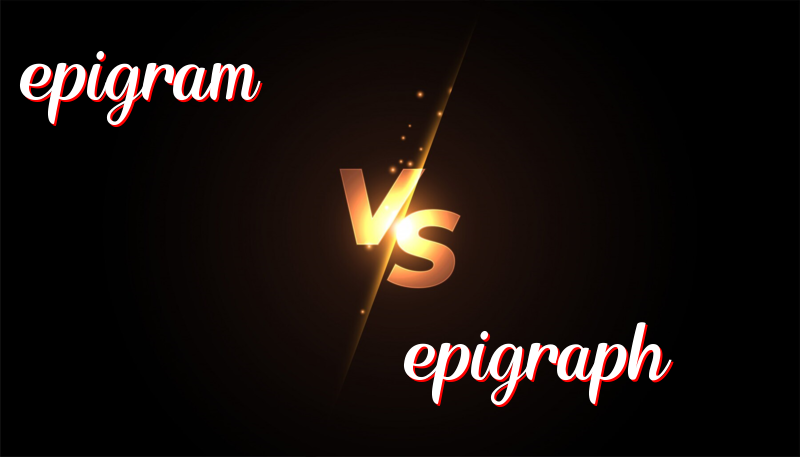英語單詞epigram 與 epigraph的區別
October 15, 2024
Epigram 與 Epigraph 的差異
在英文語言中,epigram 與 epigraph 是兩個容易混淆的詞。它們不僅在拼寫上相似,也都與文字和語言藝術相關。然而,它們的用途和歷史背景則大相徑庭。了解這些差異可以幫助我們更為準確地使用這些詞彙。
Epigram(格言)的歷史與用法
Epigram 來自希臘語 “epigramma”,意指「在上面書寫」。在古希臘與古羅馬時期,它通常用來描述一種短小而機智的詩,往往蘊含著諷刺或哲學意味。在現代,epigram 泛指任何簡短而犀利的語句或格言。
如何使用 Epigram
- Example 1: Oscar Wilde’s epigrams are famous for their wit and irony.
奧斯卡·王爾德的格言以其機智和諷刺而聞名。 - Example 2: She ended her speech with an epigram that left the audience in thought.
她以一則讓觀眾深思的格言結束了她的演講。 - Example 3: The epigram “Time is money” is often quoted in business environments.
「時間就是金錢」這句格言經常在商業環境中被引用。 - Example 4: His new book is filled with clever epigrams on life and love.
他的新書充滿了關於生活與愛情的巧妙格言。 - Example 5: Writing an effective epigram requires both insight and brevity.
寫出一則有效的格言需要洞察力與簡潔性。
Epigraph(題詞)的歷史與用法
Epigraph 源自希臘語 “epigraphein”,意思是「寫在上面」。它通常用來指刻在紀念碑或建築物上的銘文或題字。在文學中,epigraph 常指書籍或章節開頭引用的文字,這些文字可能來自別處,通常與主要內容相關聯。
如何使用 Epigraph
- Example 1: The epigraph at the beginning of the novel set the tone for the entire story.
小說開頭的題詞為整個故事奠定了基調。 - Example 2: An epigraph can provide a clue to the author’s inspiration or theme.
題詞可以為作者的靈感或主題提供線索。 - Example 3: The ancient temple had an epigraph honoring its founders.
古廟有一則題詞來紀念其創建者。 - Example 4: Many readers skipped the epigraph, missing out on its subtle insights.
許多讀者跳過了題詞,錯過了其細膩的見解。 - Example 5: The epigraph was elegantly carved in marble and caught the visitors’ attention.
這則題詞優雅地刻在大理石上,吸引了訪客的注意。
記住差異的小技巧
要記住這兩者的差異,可以這樣想:epigram 中的 “–gram” 與 “telegram”(電報)相似,表示訊息的轉達,因此 epigram 同樣是短小的訊息或語言藝術。而 epigraph 中的 “–graph” 與 “autograph”(簽名)相似,指的是書寫或刻在某物上。因此,epigraph 通常指題詞或引言。
總結
簡而言之,epigram 是指機智的格言或諷刺的短句,常用於詩歌或日常引語;而 epigraph 則是刻在或引入文本的題詞,提供背景或主題提示。無論您選擇哪個詞,準確的使用可以提升表達的精緻和深刻。

Leave a Reply
You must be logged in to post a comment.